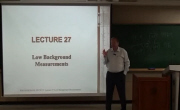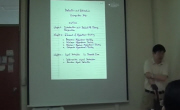Digital images and video clips collected at construction jobsites are commonly used for extracting useful information. Exploring new applications for image processing techniques within the area of construction engineering and management is a steady gr...
http://chineseinput.net/에서 pinyin(병음)방식으로 중국어를 변환할 수 있습니다.
변환된 중국어를 복사하여 사용하시면 됩니다.
- 中文 을 입력하시려면 zhongwen을 입력하시고 space를누르시면됩니다.
- 北京 을 입력하시려면 beijing을 입력하시고 space를 누르시면 됩니다.



An Analogy between Various Machine-learning Techniques for Detecting Construction Materials in Digital Images
한글로보기https://www.riss.kr/link?id=A103547610
-
저자
Abbas Rashidi (The University of Tennessee) ; Mohamad Hoseyn Sigari (University of Tehran) ; Marcel Maghiar (Georgia Southern University) ; David Citrin (Georgia Institute of Technology)

- 발행기관
- 학술지명
- 권호사항
-
발행연도
2016
-
작성언어
English
- 주제어
-
등재정보
KCI등재,SCIE,SCOPUS
-
자료형태
학술저널
-
수록면
1178-1188(11쪽)
-
KCI 피인용횟수
31
- DOI식별코드
- 제공처
- 소장기관
-
0
상세조회 -
0
다운로드
부가정보
다국어 초록 (Multilingual Abstract)
Digital images and video clips collected at construction jobsites are commonly used for extracting useful information. Exploring new applications for image processing techniques within the area of construction engineering and management is a steady growing field of research. One of the initial steps for various image processing applications is automatically detecting various types of construction materials on construction images. In this paper, the authors conducted a comparison study to evaluate the performance of different machine learning techniques for detection of three common categorists of building materials: Concrete, red brick, and OSB boards. The employed classifiers in this research are: Multilayer Perceptron (MLP), Radial Basis Function (RBF), and Support Vector Machine (SVM). To achieve this goal, the feature vectors extracted from image blocks are classified to perform a comparison between the efficiency of these methods for building material detection. The results indicate that for all three types of materials, SVM outperformed the other two techniques in terms of accurately detecting the material textures in images. The results also reveals that the common material detection algorithms perform very well in cases of detecting materials with distinct color and appearance (e.g., red brick); while their performance for detecting materials with color and texture variance (e.g., concrete) as well as materials containing similar color and appearance properties with other elements of the scene (e.g., ORB boards) might be less accurate.
참고문헌 (Reference)
1 Dimitrov, A., "Vision-based material recognition for automated monitoring of construction progress and generating building information modelling from unordered site image collections" 28 (28): 37-49, 2014
2 Neto, J., "Using colors to detect structural components in digital pictures" 17 (17): 61-67, 2002
3 Hagan, M. T., "Training feed forward networks with the Marquardt algorithm" 5 (5): 989-993, 1994
4 Cortes, C., "Support-vector networks" 20 (20): 273-297, 1995
5 Zhao, B., "Support vector machines and its application in handwritten numerical recognition" 2000
6 Zhao, L., "Study on key techniques of image processing and automatic recognition of tunnel cracks" 2012
7 Torfi, F., "Selection of project managers in construction firms using AHP and Fuzzy TOPSIS: A case study" 16 (16): 69-89, 2013
8 Brilakis, I., "Progressive 3D reconstruction of infrastructure with videogrammetry" 20 (20): 884-895, 2011
9 Zhu, Z., "Parameter optimization for automated concrete detection in image data" 19 (19): 944-953, 2010
10 Abdel-Qader, I., "PCA-based algorithm for unsupervised bridge crack detection" 37 (37): 771-778, 2006
1 Dimitrov, A., "Vision-based material recognition for automated monitoring of construction progress and generating building information modelling from unordered site image collections" 28 (28): 37-49, 2014
2 Neto, J., "Using colors to detect structural components in digital pictures" 17 (17): 61-67, 2002
3 Hagan, M. T., "Training feed forward networks with the Marquardt algorithm" 5 (5): 989-993, 1994
4 Cortes, C., "Support-vector networks" 20 (20): 273-297, 1995
5 Zhao, B., "Support vector machines and its application in handwritten numerical recognition" 2000
6 Zhao, L., "Study on key techniques of image processing and automatic recognition of tunnel cracks" 2012
7 Torfi, F., "Selection of project managers in construction firms using AHP and Fuzzy TOPSIS: A case study" 16 (16): 69-89, 2013
8 Brilakis, I., "Progressive 3D reconstruction of infrastructure with videogrammetry" 20 (20): 884-895, 2011
9 Zhu, Z., "Parameter optimization for automated concrete detection in image data" 19 (19): 944-953, 2010
10 Abdel-Qader, I., "PCA-based algorithm for unsupervised bridge crack detection" 37 (37): 771-778, 2006
11 Rashidi, A., "Optimized Selection of Key Frames for Monocular Videogrammetric Surveying of Civil Infrastructure" 27 (27): 270-282, 2013
12 Pinto, A. M., "Object recognition using laser range finder and machine learning techniques" 29 (29): 12-22, 2013
13 Rashidi, A., "Neurofuzzy genetic system for selection of construction project managers" 137 (137): 17-29, 2011
14 Beale, R., "Neural computing-an introduction" Adam Hilger 1990
15 Gutschoven, B., "Multi-modal identity verification using Support Vector Machines (SVM)" 2000
16 Brilakis, I., "Material-based construction site image retrieval" 19 (19): 341-355, 2005
17 Rashidi, A., "Innovative stereo visionbased approach to generate dense depth map of transportation infrastructure" 2215 : 93-99, 2011
18 Higgins, C., "Imaging tools for evaluation of gusset plate connections in steel truss bridges" 18 (18): 380-387, 2013
19 Feichtinger, H. G., "Gabor analysis and Algorithms: Theory and applications, Applied and Numerical Harmonic Analysis" Birkhauser 1998
20 Brilakis, I., "Content-based search engines for construction image databases" 14 (14): 537-550, 2005
21 Valentin, D., "Connectionist models of face processing: A survey" 27 (27): 1209-1230, 1994
22 Zhu, Z., "Concrete column recognition in images and videos" 24 (24): 478-487, 2010
23 Dai, F., "Comparison of image-based and time-of-flight-based technologies for three-dimensional reconstruction of infrastructure" 1 (1): 69-79, 2013
24 Song, S., "Comparative study of SVM methods combined with voxel selection for object category classification on fMRI data" 6 (6): 2011
25 Xu, G., "Automatic recognition of pavement surface crack based on BP neural network" 2008
26 Lee, S., "Automated recognition of surface defects using digital color image processing" 15 (15): 540-549, 2006
27 Son, H., "Automated color model–based concrete detection in construction-site images by using machine learning algorithms" 26 (26): 421-433, 2012
28 Man, Z., "An optimal weight learning machine for handwritten digit image recognition" 93 (93): 1624-1638, 2013
29 Tang, J., "An integrated digital image processing pavement management information system" 2012
30 Jahanshahi, M. R., "An innovative methodology for detection and quantification of cracks through incorporation of depth perception" 24 (24): 227-241, 2013
31 Jazebi, F., "An automated procedure for selecting project managers in construction firms" 19 (19): 97-106, 2013
32 Xanthopoulos, P., "A weighted support vector machine method for control chart pattern recognition" 70 : 134-149, 2014
33 Nawi, N. M., "A new Levenberg Marquardt based back propagation algorithm trained with cuckoo search" 11 : 18-23, 2013
34 Edson, J. R., "A comparison of SVM and HMM classifiers in the off-line signature verification" 26 (26): 1377-1385, 2005
동일학술지(권/호) 다른 논문
-
The Analysis and Application of Competition and Cooperation between the Bus Lines
- 대한토목학회
- Shumin Feng
- 2016
- KCI등재,SCIE,SCOPUS
-
- 대한토목학회
- Shuang Wang
- 2016
- KCI등재,SCIE,SCOPUS
-
- 대한토목학회
- 박재현
- 2016
- KCI등재,SCIE,SCOPUS
-
- 대한토목학회
- S. Shanmugapriya
- 2016
- KCI등재,SCIE,SCOPUS
분석정보
인용정보 인용지수 설명보기
학술지 이력
| 연월일 | 이력구분 | 이력상세 | 등재구분 |
|---|---|---|---|
| 2023 | 평가예정 | 해외DB학술지평가 신청대상 (해외등재 학술지 평가) | |
| 2020-01-01 | 평가 | 등재학술지 유지 (해외등재 학술지 평가) |  |
| 2010-01-01 | 평가 | 등재학술지 유지 (등재유지) |  |
| 2008-01-01 | 평가 | 등재학술지 유지 (등재유지) |  |
| 2005-05-27 | 학술지명변경 | 한글명 : 대한토목학회 영문논문집 -> KSCE Journal of Civil Engineering |  |
| 2005-01-01 | 평가 | 등재학술지 선정 (등재후보2차) |  |
| 2004-01-01 | 평가 | 등재후보 1차 PASS (등재후보1차) |  |
| 2002-01-01 | 평가 | 등재후보학술지 선정 (신규평가) |  |
학술지 인용정보
| 기준연도 | WOS-KCI 통합IF(2년) | KCIF(2년) | KCIF(3년) |
|---|---|---|---|
| 2016 | 0.59 | 0.12 | 0.49 |
| KCIF(4년) | KCIF(5년) | 중심성지수(3년) | 즉시성지수 |
| 0.42 | 0.39 | 0.286 | 0.06 |




 KCI
KCI







